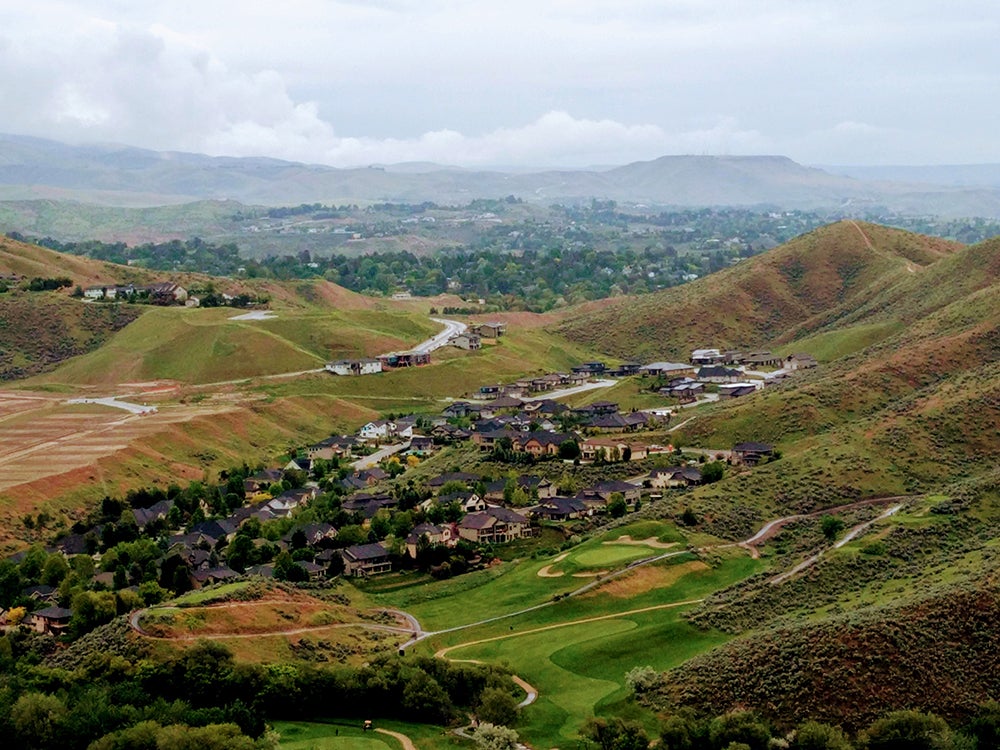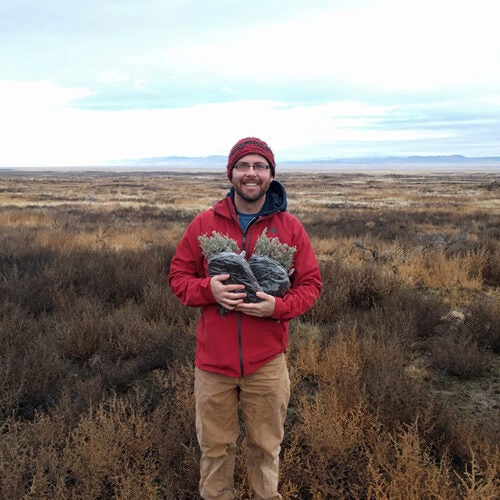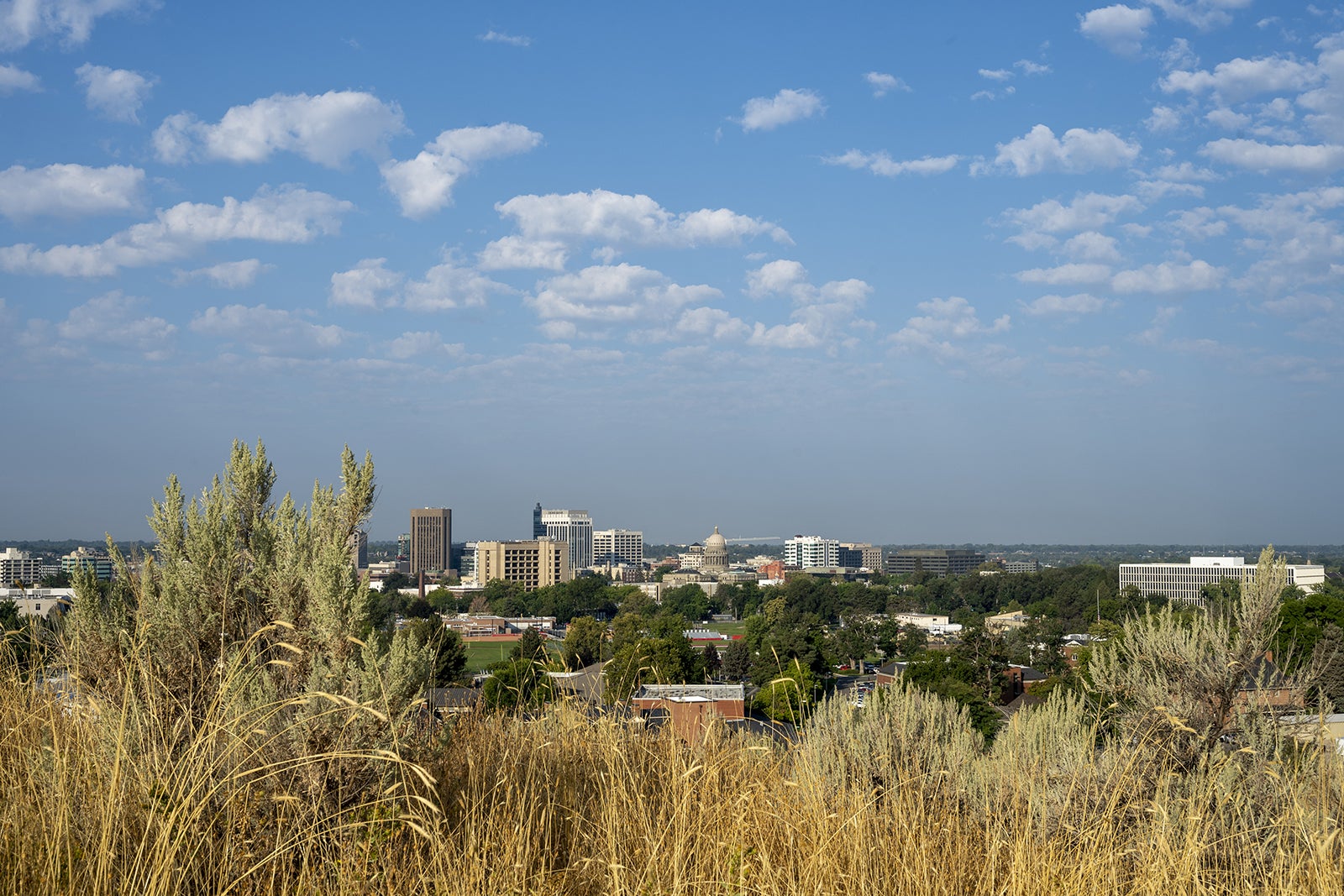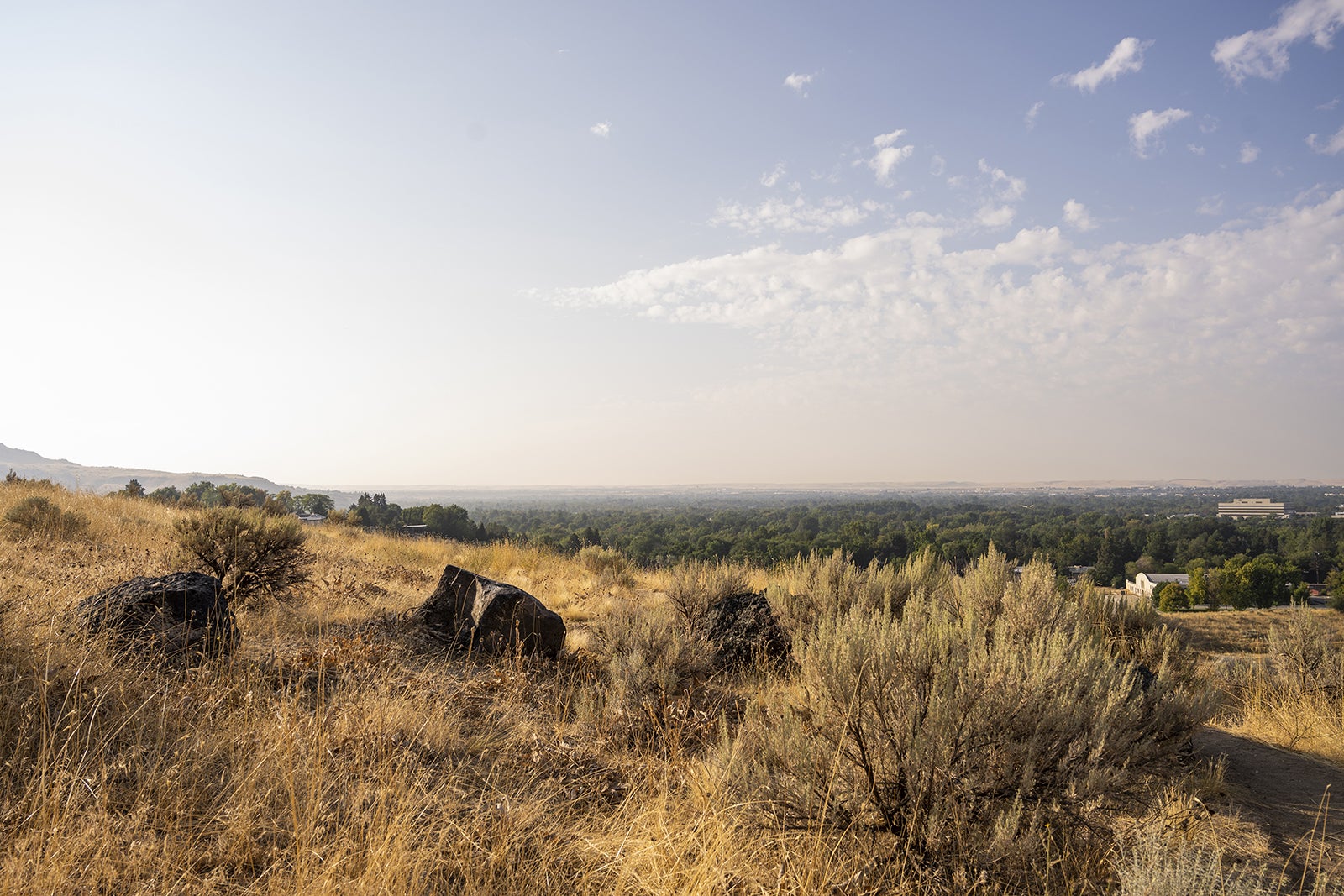
A new study from Boise State shows that explosive urbanization has negative consequences for the region’s sagebrush ecosystems, including greater declines in rangeland quality in fast-growing counties. Yet, an interesting facet of the research revealed that sagebrush habitat closest to major Western cities actually had improved rangeland quality.

This research was conducted by a team led by postdoctoral researcher Juan Requena-Mullor, in collaboration with Associate Professor of biology Trevor Caughlin, and Human Environment Studies program faculty members Jodi Brandt and Matthew Williamson. Together, the team analyzed 30 years’ worth of satellite data from 1989 to 2018 to map changes in rangeland quality across 100,000 square miles. The research covered 121 counties across nine Western states.
This research provides scientific evidence that western counties which had larger increases in human population growth showed more decline in rangeland quality. Such declines mean that the native habitat has been reduced in its ability to serve as a healthy, thriving ecosystem for diverse species. This is concerning for multiple reasons, namely that the sagebrush steppe is a critical ecosystem to many plant and animal species, and it also plays a large role in rural economies and recreation.
In conducting this research, the team added a missing piece to the puzzle surrounding the degradation of American rangeland.
“It’s widely known that fire, rising temperatures and invasive species are causing severe harm to our sagebrush steppe ecosystems,” Caughlin said. “At the same time, we have some of the fastest growing human populations in the country. The contribution of human population growth in cities to rangeland quality has not been assessed before.”

Caughlin said there was a silver lining to the research when they analyzed rangeland quality around Western cities. In the ‘donut’ of land closest to large cities like Boise, rangeland quality was actually improved. This discovery was the opposite of their hypothesis the team said.
“The way that we’re interpreting this is that if you’re really close to a city, like in the Boise foothills, there’s going to be increased attention and management. An example of that locally is the great work that the City of Boise Parks and Recreation team does to manage the foothills, supported by the Foothills Levy that Boise taxpayers paid,” Caughlin said.

Areas that are in fast-growing counties, but are further away from cities–such as areas in Ada County that are on the outskirts of the county– are the areas where one can predict the greatest rangeland degradation. Caughlin suggests that extending the land protection efforts and policies of cities like Boise and Salt Lake City could be key to reversing land damage and decline in rural areas.
“Western ecosystems occur on a patchwork of different land ownership, ranging from privately owned land, to land managed by tribes, or the federal government, or cities,” Caughlin said. “What this study shows is that land owned by cities should be part of that conversation, because even if it’s a relatively small proportion of the total land in the West, there are effects of cities that extend beyond the immediate land-use footprint of the city.”
When asked what was most rewarding about conducting this study, Requena-Mullor said, “It’s the opportunity to continue advancing the environmental sustainability of the western U.S. By revealing the contribution of human population growth to rangeland degradation and highlighting the importance of accessibility and resource allocation, our study can help guide decision-making for conservation efforts.”
The research, published in Science Direct Landscape and Urban Planning, Volume 232.
